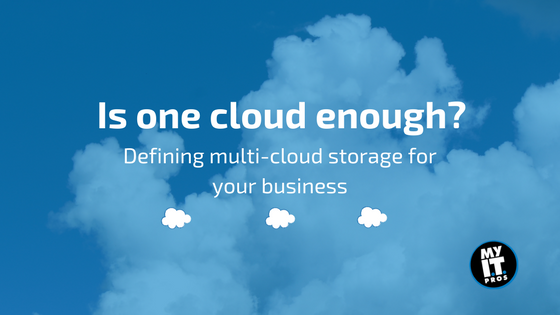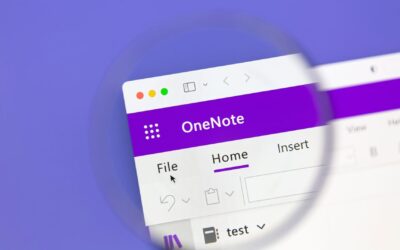
You’ve finally gotten used to cloud computing—in fact, you’re pretty confident you can use that phrase correctly in a sentence. But all of a sudden, you start to see headlines like, “What’s next for the cloud?” and “Is one cloud enough?”
That’s technology for you. As soon as you get comfortable with one platform, a new one pops up. But you don’t have to fear innovation. Multi-cloud storage may sound complicated, but all it means is spreading your workload across multiple different cloud environments. In fact, you may even have a multi-cloud model already and not even know it. Here’s how you can tell, and what you need to know about multi-cloud storage to design a more intentional IT strategy.
What is multi-cloud storage?
For many businesses, the multi-cloud storage model develops organically. Maybe your employees save internal documents on Microsoft OneDrive or run their mailboxes through Office 365. Maybe you host some applications on a public cloud like Amazon’s AWS and use a private cloud to store secure data like client health records or credit card information. That’s multi-cloud storage at work.
Research shows that companies manage an average of 3.6 public and 4.4 private clouds, so for many, the multi-cloud model arises as a result of doing business as usual. However, some enterprises deliberately structure their IT architecture to include multiple cloud environments—a strategy with several benefits that you can read about below.
Why choose a multi-cloud environment?
You know that old saying, “don’t put all your eggs in one basket?” That goes for the cloud, too. It’s risky to use one environment to store all your assets. What happens if your cloud provider experiences a denial of service attack or other outage? Suddenly, your clients can’t access your applications and your employees can’t access the information they need to schedule appointments or train new hires. You’d knock out about 75% of your operations in one fell swoop, not to mention that even temporary outages can significantly impair your reputation for stability.
Meanwhile, if you’re putting everything—even sensitive information—on a public cloud, you’re putting your business at risk of a data breach. Using a private cloud designed for your company alone affords you greater control over data security and allows you to create higher access controls that will ensure only your IT team or your managed services provider will be allowed to manipulate your cloud security settings. The less access, the fewer chances for inappropriate use.
So why not host everything on a private cloud and be done with it? That’s not ideal either, as public clouds have the benefit of speed and convenience. Your IT team can create a new network in a matter of minutes, which allows for easy, manageable testing of new sites and products. Public cloud providers usually feature state-of-the-art technology as well—all with a minimal investment. Simply put, there’s a good reason for their popularity.
How does multi-cloud storage differ from a hybrid cloud?
The benefit of a multi-cloud model is that you can take advantage of multiple providers and cloud configurations. This looks slightly different from a hybrid cloud, which combines both public cloud and on-premise environments through one provider. In a multi-cloud model, your business uses several different providers to create multiple environments and to meet various application and data needs.
For instance, you might use multi-cloud to resolve geographic app latency issues or avoid vendor lock-in—that feeling of being dependent on one provider for all your cloud needs. Distributing workloads across multiple providers makes it easier to switch to a different vendor if your business needs change.
Of course, a multi-cloud strategy also comes with drawbacks. Compliance and administration can easily become burdensome in such a setup, and internal staff may need to work harder to acquaint themselves with different management portals and processes. Luckily, a managed services provider can help you keep track of multiple vendors and services. MSPs ensure that security is up to snuff across different environments and that providers use high-level protection for your data.
See? Nothing to be scared of!



